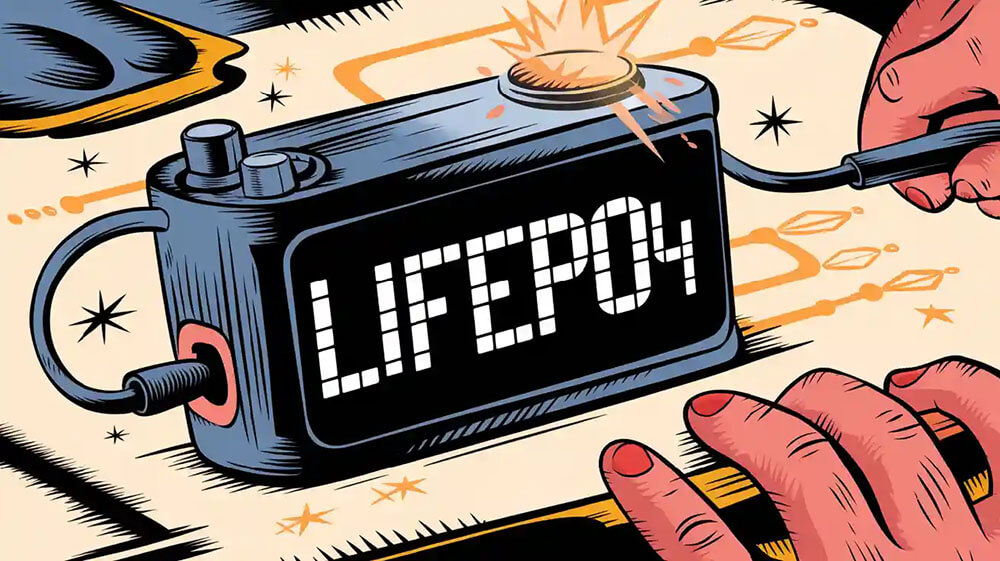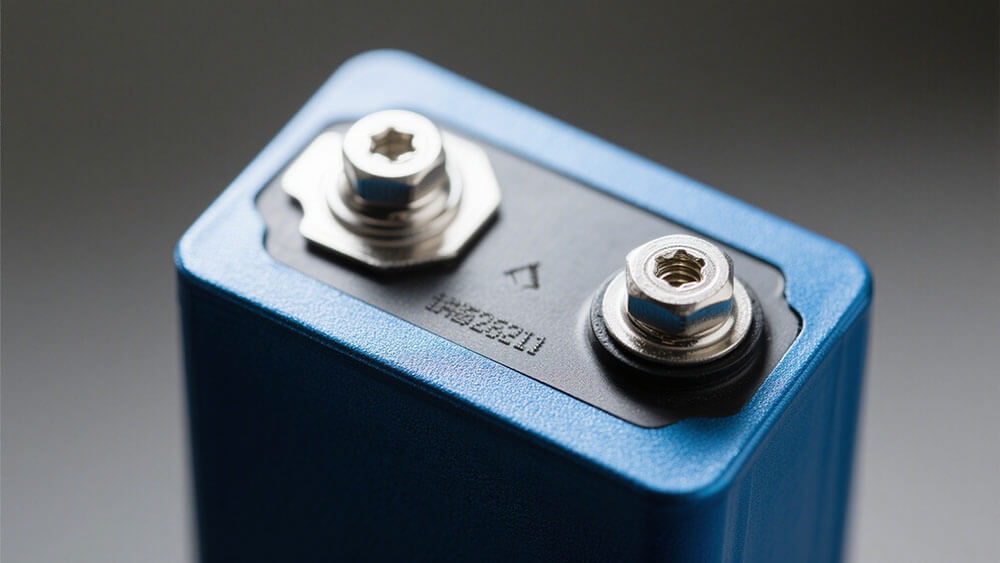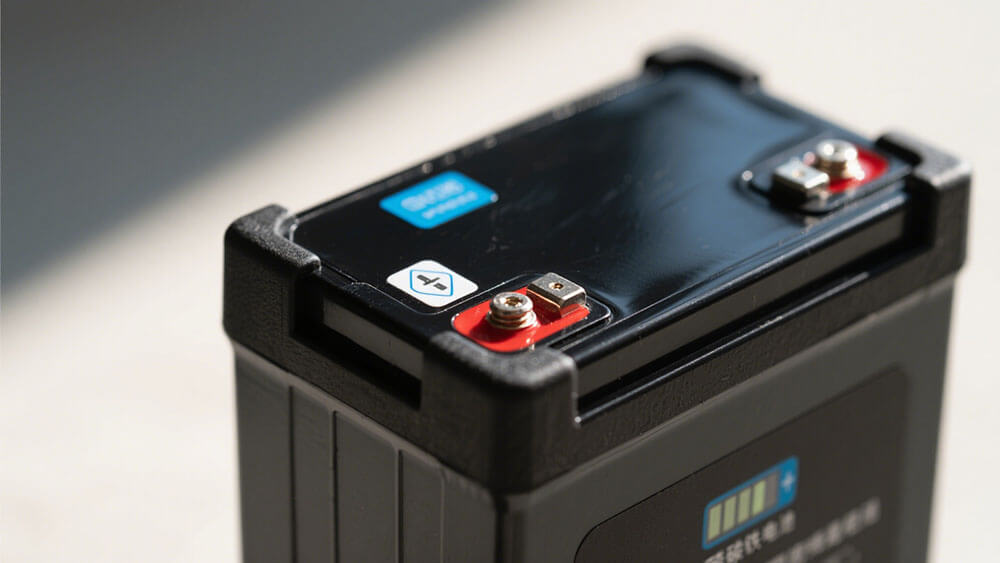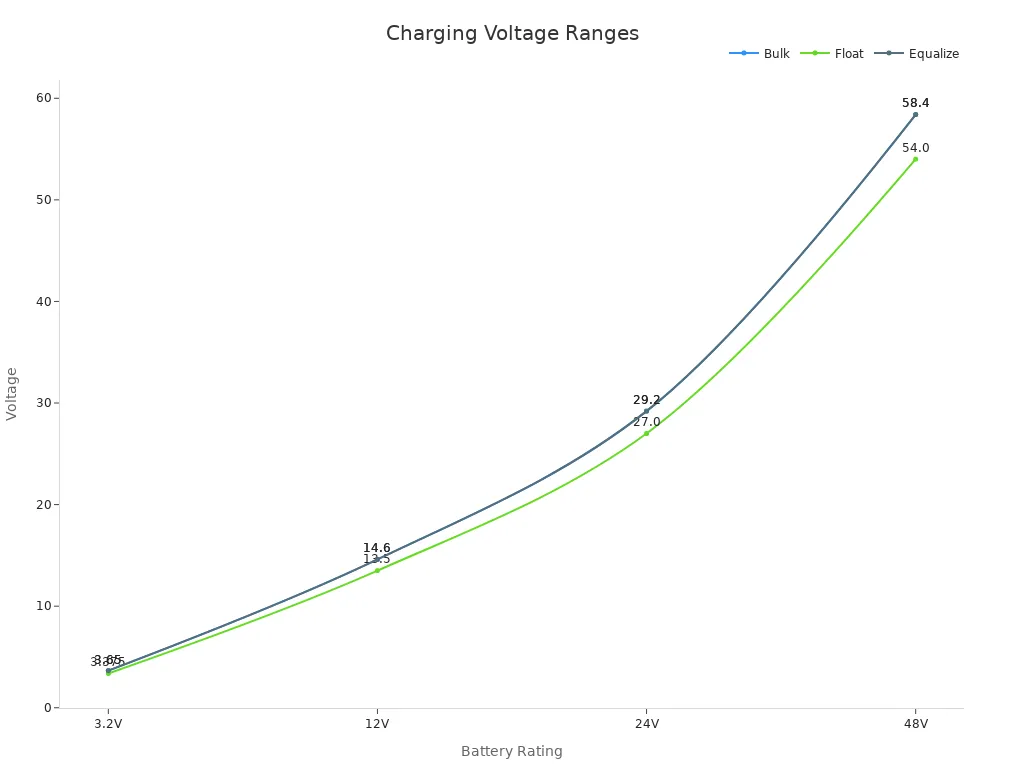
The best charge voltage for LiFePO4 batteries ranges from 3.2V to 3.65V per cell. Staying within this range ensures optimal performance and extends the battery’s lifespan. For instance, charging at 3.65V minimizes capacity loss while significantly boosting cycle life. Studies also reveal that improper charging can accelerate aging due to chemical degradation processes.
In industrial and renewable energy systems, precise LiFePO4 charge voltage plays a critical role. LiFePO4 battery packs, often used in these applications, demand accurate voltage control to maintain efficiency and reliability. By adhering to recommended charge voltage limits, you can maximize the benefits of this advanced battery technology.
Key Takeaways
Keep the charge voltage between 3.2V and 3.65V per cell. This helps the battery work well and last longer.
Use a charger made for LiFePO4 batteries to stay safe and stop overcharging.
Check the battery’s voltage and temperature often to prevent harm and make it last longer.
Part 1: Understanding LiFePO4 Battery Voltage Basics

1.1 Nominal Voltage and Its Role in Battery Performance
The nominal voltage of LiFePO4 batteries is typically 3.2V per cell. This value represents the average voltage during discharge and serves as a benchmark for designing battery systems. For example, a 12V LiFePO4 battery pack consists of four cells in series, resulting in a nominal voltage of 12.8V. This voltage directly impacts the battery’s performance, power output, and compatibility with devices. Higher nominal voltage often correlates with greater capacity and efficiency. However, discharging below the minimum voltage (10V for a 12V system) can damage the battery and reduce its lifespan. Maintaining the correct nominal voltage ensures optimal performance and longevity.
1.2 Bulk, Float, and Equalize Voltages for LiFePO4 Batteries
LiFePO4 batteries use specific charge voltage stages to optimize charging. The bulk charging voltage is the primary stage where the battery charges at a constant current until it reaches 3.65V per cell. This stage restores most of the battery’s capacity. Float voltage, typically around 13.6V for a 12V system, maintains the battery’s charge without overcharging. However, prolonged float charging can degrade lithium iron phosphate batteries. Studies show that storing these batteries at 100% state of charge (SOC) for extended periods leads to capacity loss. Equalize charging, often unnecessary for LiFePO4 lithium batteries, balances cell voltages in a pack but must be carefully controlled to avoid overcharging.
⚠️ Tip: To extend battery life, store LiFePO4 batteries at approximately 50% SOC when not in use.
1.3 Voltage Behavior in Series and Parallel Configurations
Voltage behavior changes depending on how you configure LiFePO4 batteries. Connecting cells in series increases the total voltage by adding each cell’s voltage. For instance, four 3.2V cells in series create a 12.8V system. In contrast, parallel connections increase capacity by summing the ampere-hour ratings while maintaining the same voltage. For example, two 12.8V batteries connected in parallel double the capacity without altering the voltage. However, thermal gradients in parallel setups can lead to uneven current distribution and accelerated degradation. Monitoring and balancing these configurations is essential for maintaining battery health and performance.
Part 2: Optimal LiFePO4 Charge Voltage

2.1 Recommended Voltage Range for Single Cells
For single-cell LiFePO4 batteries, the recommended charge voltage range lies between 3.2V and 3.65V. This range ensures optimal performance and prevents overcharging, which can degrade the battery’s lifespan. The charge termination voltage for these batteries is typically set at 3.65V, as exceeding this value may lead to safety risks or accelerated aging. On the lower end, the discharge voltage should not drop below 2.5V to avoid irreversible damage to the cell.
Charging follows a two-stage process: constant current (CC) and constant voltage (CV). During the CC phase, the battery charges at a steady current until it reaches the upper voltage limit of 3.65V. The CV phase then maintains this voltage while the current gradually decreases. This method ensures the battery reaches full capacity without overcharging. Industry research highlights that charging at currents between 0.2C and 0.5C minimizes risks of overheating and extends the battery’s cycle life.
⚠️ Note: Always use a charger specifically designed for LiFePO4 lithium batteries to maintain the recommended charge voltage and ensure safety.
2.2 Voltage Guidelines for LiFePO4 Battery Packs
LiFePO4 battery packs consist of multiple cells connected in series or parallel configurations. For series connections, the total charge voltage equals the sum of the individual cell voltages. For example, a 12V LiFePO4 battery pack with four cells in series requires a charge termination voltage of 14.6V (4 × 3.65V). Maintaining this precise voltage is critical to prevent overcharging any single cell, which could compromise the entire pack’s performance.
To achieve balanced charging, battery management systems (BMS) play a vital role. A BMS monitors each cell’s voltage and ensures uniform charging across the pack. Without this system, voltage imbalances can occur, leading to reduced capacity and potential safety hazards. Float charging, often set at 13.6V for a 12V system, helps maintain the pack’s charge without overcharging. However, prolonged float charging should be avoided to preserve the battery’s health.
Configuration Type | Total Voltage | Example (4 Cells) |
|---|---|---|
Series | Sum of cell voltages | 14.6V (4 × 3.65V) |
Parallel | Same as single cell | 3.65V |
💡 Tip: Use a charger with built-in balancing features to maintain the recommended charge voltage for LiFePO4 battery packs.
2.3 Adjusting Voltage Based on Temperature and Environmental Factors
Environmental conditions significantly influence the charging voltage of LiFePO4 batteries. Temperature, in particular, affects the battery’s chemical reactions and overall performance. At low temperatures (below 0°C), charging should occur at a reduced current to prevent lithium plating, which can permanently damage the battery. Preheating the battery to a safe temperature range is advisable in such cases. Conversely, at high temperatures (above 45°C), the charge voltage may need to be slightly reduced to avoid thermal stress.
Manufacturers often provide specific guidelines for adjusting the charge voltage based on temperature. For instance, some recommend reducing the charge termination voltage by 0.1V per cell when operating in high-temperature environments. Following these adjustments ensures the battery remains within its safe operating limits, enhancing both safety and longevity.
🌡️ Callout: Always consult the manufacturer’s specifications for temperature-dependent voltage adjustments to optimize your LiFePO4 battery’s performance.
For industrial applications, where batteries often operate in diverse environments, implementing temperature sensors and automated voltage adjustments can streamline maintenance. These measures not only protect the battery but also improve the reliability of the entire system.
Part 3: Practical Charging Recommendations for LiFePO4 Batteries

3.1 Selecting the Right Charger for LiFePO4 Batteries
Choosing the correct charger is essential for maintaining the performance and longevity of LiFePO4 batteries. Unlike standard lithium-ion chargers, LiFePO4 batteries require specialized chargers designed to deliver the precise charge voltage range of 3.2V to 3.65V per cell. Using an incompatible charger can lead to overcharging, which may degrade the battery or pose safety risks.
When selecting a charger, consider the following factors:
Charging Method: Opt for chargers that support constant current (CC) and constant voltage (CV) modes. These ensure the battery charges efficiently without exceeding the recommended charge voltage.
Overcharge Protection: Standard chargers often lack safeguards against overcharging. A LiFePO4-specific charger includes built-in mechanisms to prevent this issue.
Additional Equipment: If you use LiFePO4 batteries in solar energy systems, a charge controller is necessary. It regulates the charge voltage and protects the battery from damage caused by fluctuating solar input.
Aspect | Details |
|---|---|
Charging Method | Requires specialized chargers for optimal voltage |
Risk of Overcharging | Normal chargers do not protect against overcharging |
Additional Equipment Needed | A charge controller is necessary to prevent battery damage during solar charging |
💡 Tip: Always verify that the charger matches the specifications of your LiFePO4 battery pack. This ensures safe and efficient charging, especially in industrial or renewable energy applications.
3.2 Monitoring and Maintaining Battery Health for Longevity
Regular monitoring and maintenance are critical for extending the lifespan of LiFePO4 batteries. By keeping track of key performance metrics, you can identify potential issues early and take corrective action.
Here are some best practices for maintaining battery health:
Monitor Voltage and Temperature: Use a battery management system (BMS) to track individual cell voltages and temperatures. This prevents overcharging, undercharging, and thermal stress.
Perform Routine Inspections: Check for physical damage, corrosion, or loose connections. Addressing these issues promptly can prevent further degradation.
Avoid Deep Discharges: Discharging below 2.5V per cell can cause irreversible damage. Maintain a minimum charge level to preserve capacity.
Store Properly: When not in use, store LiFePO4 batteries at approximately 50% state of charge (SOC) in a cool, dry environment.
Reliability tests validate these recommendations. For example:
Test Type | Purpose | Results |
|---|---|---|
Low Temperature Testing | Assess battery performance in sub-zero conditions. | Confirms reliability in diverse climates. |
High Current Charge/Discharge | Verify capacity to handle high current without lifespan compromise. | Ensures dependable performance in critical applications. |
Cycle Life Test | Determine overall lifespan by simulating real-world usage. | Confirms long-term reliability for sustained use. |
Thermal Shock Test | Determine resilience to sudden temperature changes. | Ensures reliability in fluctuating conditions. |
⚠️ Note: Implementing a BMS is especially important for LiFePO4 battery packs used in demanding environments, such as industrial or renewable energy systems.
3.3 Common Charging Mistakes and How to Avoid Them
Improper charging practices can significantly reduce the lifespan of LiFePO4 batteries. Avoid these common mistakes to ensure optimal performance:
Using the Wrong Charger: A charger not designed for LiFePO4 batteries may deliver an incorrect charge voltage, leading to overcharging or undercharging. Always use a charger specifically designed for LiFePO4 lithium batteries.
Overcharging: Charging beyond 3.65V per cell can accelerate aging and pose safety risks. Use a charger with overcharge protection to prevent this issue.
Prolonged Float Charging: Keeping the battery at 100% SOC for extended periods can degrade its capacity. Instead, store the battery at 50% SOC when not in use.
Ignoring Temperature Effects: Charging at extreme temperatures can damage the battery. Preheat the battery in cold conditions and limit charging voltage in high temperatures.
🚫 Avoid: Connecting LiFePO4 batteries in parallel without proper balancing. This can lead to uneven current distribution and accelerated degradation.
By following these recommendations, you can maximize the lifespan and performance of your LiFePO4 batteries. For customized battery solutions tailored to your specific needs, explore our custom battery solutions.
Maintaining the optimal charge voltage range of 3.2V to 3.65V per cell is crucial for ensuring the performance and longevity of LiFePO4 batteries. Proper charging practices, such as using a compatible charger and monitoring voltage, prevent overcharging and extend battery life. The table below highlights industry best practices for different configurations:
Charging Type | 3.2V | 12V | 24V | 48V |
|---|---|---|---|---|
Bulk | 3.65V | 14.6V | 29.2V | 58.4V |
Float | 3.375V | 13.5V | 27.0V | 54.0V |
Equalize | 3.65V | 14.6V | 29.2V | 58.4V |

To maximize the benefits of LiFePO4 batteries, always adhere to the recommended charge voltage and use a Battery Management System (BMS) for added protection. For tailored solutions, explore our custom battery solutions.
FAQ
1. What happens if you charge LiFePO4 batteries above 3.65V per cell?
Overcharging above 3.65V can cause chemical degradation, reduce cycle life, and pose safety risks. Use a charger with overcharge protection to prevent this issue.
Alert: Always monitor charging voltage to avoid exceeding safe limits.
2. LiFePO4 batteries be charged in cold temperatures?
Charging below 0°C risks lithium plating, which damages the battery. Preheat the battery or reduce charging current to ensure safe operation in cold environments.
Tip: Use temperature sensors for automated adjustments.
3. How do you balance cells in a LiFePO4 battery pack?
A Battery Management System (BMS) balances cell voltages during charging. It prevents overcharging and ensures uniform performance across the pack.
Feature | Purpose |
|---|---|
Voltage Monitoring | Prevents imbalances |
Thermal Protection | Avoids overheating risks |
Note: Choose a charger with built-in balancing features for optimal results.
For tailored solutions, explore Large Power’s custom battery solutions.




